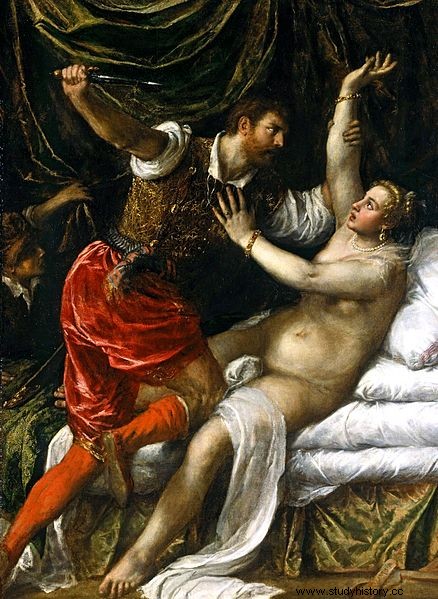Roman tradition, written between legend and history, considers that no less than seven kings, Sabines (first inhabitants of one of the seven hills of Rome), Latins or Etruscans succeeded each other before the foundation of the Roman Republic. Shrouded in legends - wasn't the first founder of Rome, Romulus, collected and fed by a she-wolf? -, these kings would have built the foundations of the city which became all-powerful. Land of promises, Rome attracts, which is why Tarquin the Elder, probably from Tarquinia in Etruria (territory of the Etruscans), came to take up residence there. His wife, Tanaquil, saw a good omen for her husband when an eagle, symbol of royalty, came to remove and then put back his hat. Dismissing the sons of King Ancus in succession to the latter, he had himself named king by leading a strong campaign, announcing the beginning of the reign of the Etruscans. After Tarquin the Elder, to whom tradition attributes the construction of many buildings such as the Circus Maximus, Servius Tullius continued the conquests after the assassination of his father-in-law Tarquin the Elder to further increase Rome and began to institutionalize the city. He is at the origin of what will later become the tax system by listing and distributing citizens according to their wealth. It also divides Rome into 4 tribes, and defines the administration of the city. He would have created the first Roman currency. His assassination by his son-in-law Tarquin the Superb, son of Tarquin the Elder, left tyranny to be established in Rome. Tarquin the Superb (which means the proud), annexed many territories and built many monuments such as the temples of Minerva, Juno and Jupiter on the Capitol; but he maintains his power only through violence.
509 BC

Characters
Tarquin the Elder
Servius Tullius
Tarquin the Superb
Tarquin Collatin
Lucius Junius Brutus
Procedure
According to legend, the son of King Tarquin the Superb, Sextus Tarquin, allegedly abused a young girl named Lucretius, who demanded revenge before stabbing herself. Tarquin Collatin (husband of Lucretius) and Lucius Junius Brutus, among others, thus drove the Tarquins from power and overthrew the monarchy in -509, in favor of a different magistracy:the Republic. It is an oligarchic system because the patricians (former families of great fortune), who are the ruling class, leave little room for the plebeians (the people), prohibited from high office since deprived of the cursus honorum (honours career). The magistrates are elected by the Comices. Former magistrates, appointed for life, make up the Senate and vote on laws. Their opinions are authoritative over those of the magistrates (senatus consulte ). Among the magistrates, two of them, appointed consuls, receive power for one year. There is therefore “the Senate and the Roman people”, as the famous motto of the Roman Republic explains:Senatus populusque romanus whose initials "SPQR" appear on the monuments or coins.
Consequences
The abolition of the Monarchy and the creation of the bicephalous power (with two heads) that is the Republic will maintain, thanks to the institutions, the political stability of Rome. The Republic lasted about 5 centuries and allowed it to increase its power by establishing its hegemony all around the Mediterranean.
